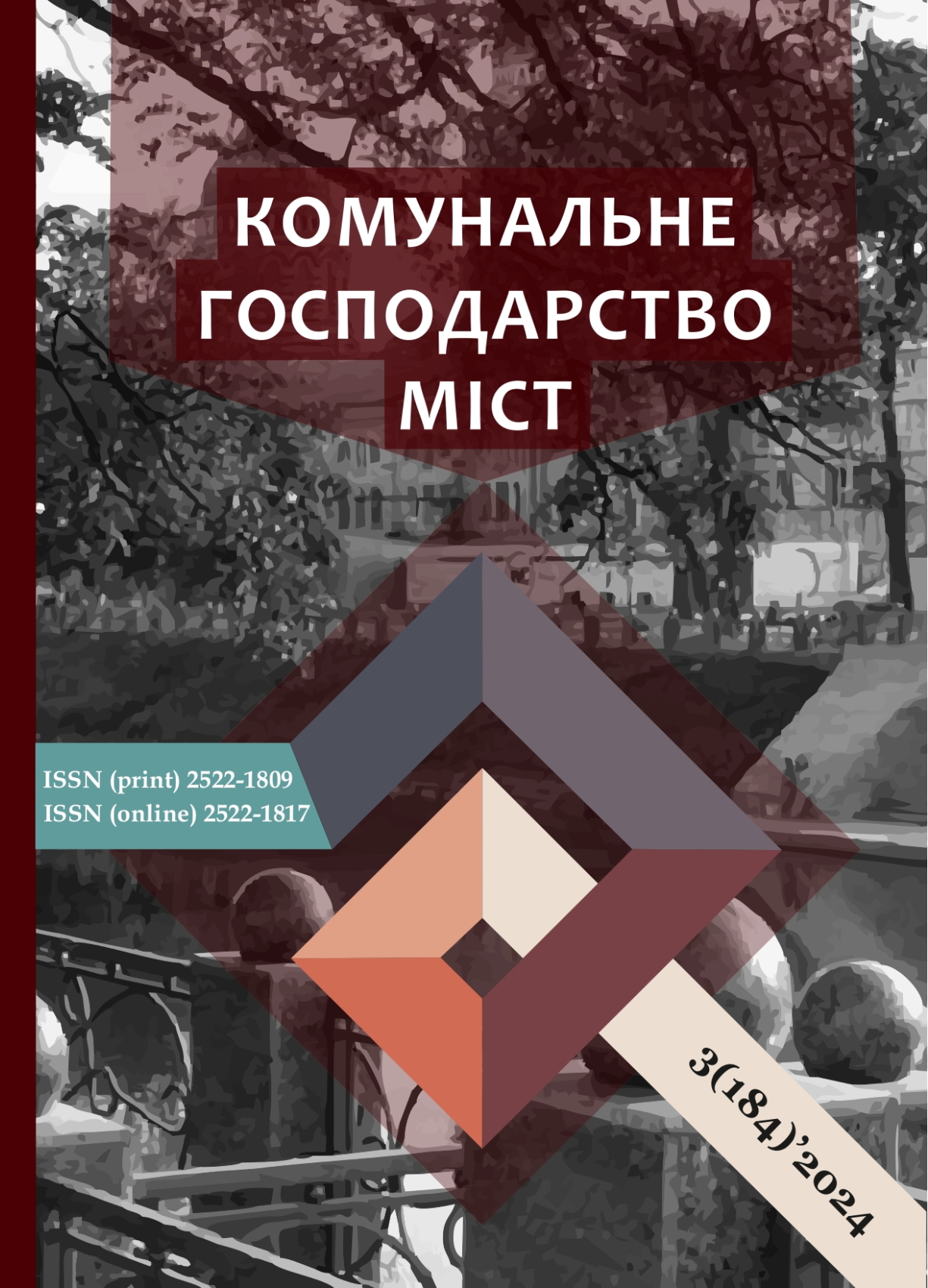TECHNOLOGICAL ASPECTS OF PRODUCTION OF EPOXY ASPHALT CONCRETE BY ADDING CARBON ADDITIVES
DOI:
https://doi.org/10.33042/2522-1809-2024-3-184-99-106Keywords:
epoxy asphalt concrete, additive, fibre, fly ash, combustion productsAbstract
Epoxy asphalt concrete is a durable, high-quality material consisting of epoxy resins, hardeners, and the mineral part itself. Accordingly, slow-hardening epoxy asphalt concrete has high physical properties and low sensitivity to temperature changes, which makes it usable as a rigid pavement and applicable even on metal and concrete bridge decks. However, a downside of epoxy asphalt concrete is its ability to gain strength over a long period of operation (up to 1 year). It is a disadvantage when using such coatings in the upper layer of the road surface. In addition, a long period of strength gain during intensive use of the road pavement leads to critical destruction of the pavement itself, plastic deformation, and a reduction in the service life (which may differ much from the standard). Using metal fibre substantially increases the strength and keeps the area from collapsing. The use of metal elements can significantly reduce the performance of the tires of vehicles that will drive on the road and even create a hazard in the event of destruction of the epoxy asphalt concrete area. Using epoxy binders notably increases the strength characteristics of road materials, especially at high temperatures, and boosts their ability to resist rutting. At the same time, the characteristics of epoxy concrete do not decrease during operation and at low temperatures, which indicates the versatility of such a material. The only drawback that cancels out all the positive features of epoxy asphalt concrete is its long strength gain. This disadvantage not only led to the problems mentioned above but also delayed the opening of traffic, which, especially on roads of higher categories, caused traffic disruption and inconvenience to the movement of vehicles. The authors proposed a solution to this problem by developing an improved epoxy asphalt concrete composition by introducing fibre ash into the developed composition as a reinforcing and structuring additive that accelerates the pavement formation time and strengthens the asphalt matrix in epoxy asphalt concrete.
References
Apostolidis, P., Liu, X., Erkens, S. & Scarpas, T. (2020). Oxidative aging of epoxy asphalt. International Journal of Pavement Engineering. Retrieved from https://www.tandfonline.com/doi/pdf/10.1080/10298436.2020.1806278
Beranger, J., Rivoir, J., Samano, J. & Vaniscot, J. (1992). Practical guide to road construction: modified road binders. Technical Manual TR 9.12 (R). London.: Shell Chemicals, 21.
Cong, P., Luo, W., Xu, P., & Zhang, Y. (2019). Chemical and physical properties of hot-mix epoxy asphalt binders. Construction and building materials, 198, 1-9.
Downes, J.W. (1986). 1. Modified binders to the year 2000. In 6th International Asphalt Conference (Australia, January 1986) (pp. 35-39). Australia: Sydney.
Yevdokymov I. N., Yelisieiev D. Yu., Yelisieiev N. Yu. (2002). & Yelisieiev N. Yu. (2002). Nehatyvna anomaliia viazkosti ridkykh naftoproduktiv pislia termichnoi obrobky. Khimiia i tekhnolohiia palyv i masel, 3, 26-29.
Gong, J., Liu, Y., Wang, Q., Xi, Z., Cai, J., Ding, G., & Xie, H. (2019). Performance evaluation of warm asphalt mix modified with epoxy asphalt rubbers. Construction and Building Materials, 204, 288-295.
Hrudnikov I.B. (2001). Kombinovani dorozhni bitumy pidvyshchenoi yakosti. Naftopererobka ta naftokhimiia, 4, 34-36.
Atynian A., Trykoz, L., Borodin D. PROTECTION OF RAILWAY INFRASTRUCTURE ОBJECTS АGAINST ЕLECTRICAL СORROSION. Baltic Journal of Road and Bridge Engineering, 2021 10с https://www.emerald.com/insight/content/doi/10.1108/ACMM-05-2021-2483/full/html
A.O. Atynian, O.Iu. Suprun, A.A. Zhyhlo, S.V.Shapoval. MODYFIKUVANNIa NANOMATERIALAMY NEORHANIChNYKh VIaZhUChYKh TA BETONYKh SUMIShEI NA YiKh OSNOVI Problemy nadiinosti ta dovhovichnosti inzhenernykh sporud i budivel na zaliznychnomu transporti. Tezy dopovidei 9 Mizhnarodnoi naukovo-tekhnichnoi konferentsii. s 195-197. Kharkiv 2021. https://epositsc.nuczu.edu.ua/bitstream/123456789/13824/1/Theses_2021_with_title_10.11%20осн.pdf.
Herrington, P., Cook, S., Reilly, S., Alabaster, D. & Fussell, A. (2006). Effect of epoxy-modified bitumen on the cohesive properties of porous asphalt concrete. Wellington: Central Laboratory of Opus international Consultants Limited, 17 p.
Atynian A.O. Prokyna K. Vykorystannia novitnikh materialiv pry remonti mostiv. Materialy KhV vseukrainskoi studentskoi naukovo-tekhnichnoi konferentsii «stalyi rozvytok mist». 23-25s.Kharkiv 2021 https://eprints.kname.edu.ua
Huang, M. (2019). Study of the production process of epoxy-emulsified asphalt. Digital Manufacturing Transforming Industry Towards Sustainable Growth, 30, 380-387.
Yu, X., Dong, F., Ding, G., Liu, S., & Shen, S. (2016). Реологічні та мікроструктурні властивості спіненого епоксидного асфальту. Будівництво та будівельні матеріали, 114, 215-222.
Matsipura P. A. Intensyfikatsiia protsesu modyfikatsii bitumiv epoksydnymy spolukamy : dysertatsiia na zdobuttia naukovoho stupenia doktora filosofii: 161 – khimichni tekhnolohii ta inzheneriia (05.17.07 «Tekhnolohiia palyva ta palyvno-mastylnykh materialiv») / Pavlo Anatoliiovych Matsipura ; Ministerstvo osvity i nauky Ukrainy, Natsionalnyi universytet “Lvivska politekhnika”. – Lviv, 2021. – 138 s. – Bibliohrafiia: s. 114–127.
Downloads
Published
How to Cite
Issue
Section
License
The authors who publish in this collection agree with the following terms:
• The authors reserve the right to authorship of their work and give the magazine the right to first publish this work under the terms of license CC BY-NC-ND 4.0 (with the Designation of Authorship - Non-Commercial - Without Derivatives 4.0 International), which allows others to freely distribute the published work with a mandatory reference to the authors of the original work and the first publication of the work in this magazine.
• Authors have the right to make independent extra-exclusive work agreements in the form in which they were published by this magazine (for example, posting work in an electronic repository of an institution or publishing as part of a monograph), provided that the link to the first publication of the work in this journal is maintained. .
• Journal policy allows and encourages the publication of manuscripts on the Internet (for example, in institutions' repositories or on personal websites), both before the publication of this manuscript and during its editorial work, as it contributes to the emergence of productive scientific discussion and positively affects the efficiency and dynamics of the citation of the published work (see The Effect of Open Access).

